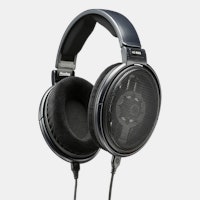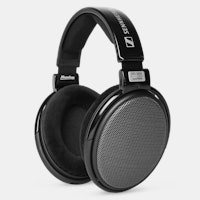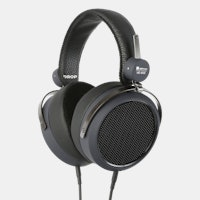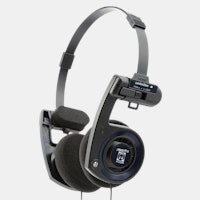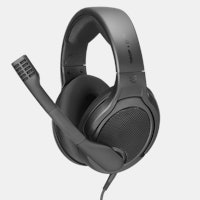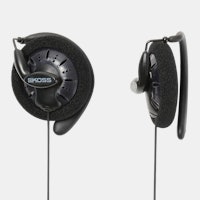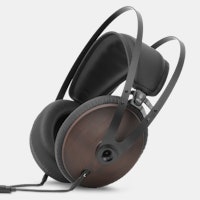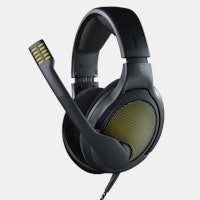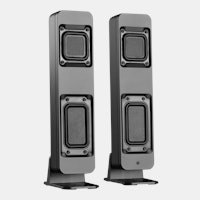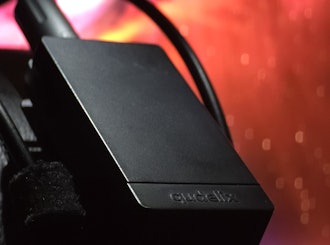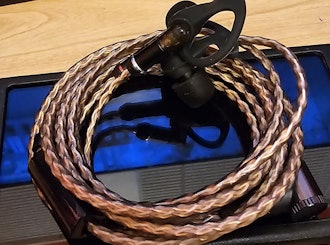Click to view our Accessibility Statement or contact us with accessibility-related questions











Showing 1 of 9 conversations about:

Bravo Audio SP1 12AU7 Class A Tube Stereo Amplifier

alkc
2
Oct 5, 2022
My concern would be for electric shock if you accidentally got your fingers into this or maybe damage something. Is this a legitimate concern?

Evshrug
3772
Community
Oct 5, 2022
alkcI’ve had this kind of acrylic sandwich design for years in headphone amps and Raspberry Pi micro computers. It’s not that easy to jam your fingers inside by accident, it does allow heat to escape, some people think it looks cool to see the electronic guts (kind of makes sense with the tube enthusiast audience), and just like any electronic I would advise against dropping anything heavy on it.
I’d be more concerned/interested in adding a faraday cage or something equivalent around the tube, because that’s one of the most dangerous parts to touch while operating, and you don’t see most tube amps protecting people from the tubes.
(Edited)

SuperFlyEDSguy
58
Oct 11, 2022
EvshrugThink this through with me. It says that it’s a Class D amp with the 12AU7 tube being used for buffering, right? However, it first mentioned that it’s a Class A “tube” amp, yes? So, which is it, a “buffer” or an “amp?” If we say “amp” how does the correct class factor in? Well let’s find out! (You probably knew that I was gonna say that. Anyways…)
The back certainly appears to have a “barrel” style input for DC power, like you said a generic “Walmart” adapter should work just fine, and I think you’re right as we don’t really see the components up close, but we are lacking a bridge rectifier and step-down transformer. This immediately should scream that those parts are external and it takes a nominal amount of DC voltage to operate. This is important, like really important, but first…
Let’s get back to the 12AU7 tube, you seem worried that it’ll put out a lot of heat, right?! Actually, no! Really! No. This is because in order to operate as an amp (instead of a buffer) we would need ~300V (DC, but that’s a separate conversation) across the plate in order to allow it to operate in a mode that will support Class A amplification. Oddly, the 12AU7 spec sheet doesn’t discuss Class D, but as we will soon see it doesn’t make much of a difference because of the amount of voltage available across the plate. So, an external transformer may give us something like 12VDC and that’s waaayyyyyyy less than what we would need to operate as an amp, so it’s working as a buffer using a methodology called “starved plate” design. Though you may hear people online saying that this particular design “doesn’t work,” I can assure you that it works just fine to “buffer” audio, it just won’t amplify it! You’d need a solid state counterpart for that while using a 12VDC-ish source. The reason why a “starved plate” (literally starving it for voltage) won’t work for amplification is because the plate is integral to the amplification process, however tubes were not originally designed as buffers, but we discovered when not applying ideal voltages across the plate that we get certain desirable audio characteristics that we didn’t account for when tubes WERE designed for Radar applications and the like.
As the voltage is so low, we are not going to have nearly the heat output that we would with a true Class A amplifier setup using the very same tube, and this is why you’ll sometimes see tube preamps being sold with LEDs making the tube glow inorganically. It’s just cool to look at as it’s not something that we would actually have resulting from such a buffer design, however if the buffer is designed right it will sound quite nice! It just won’t glow red hot!
So, if you were following my logic, you will see — hopefully — that heat is negligible being due to the design constraints of a “starved plate” buffer, and as we are not dealing with something that needs to be EMF protected, there is simply no need for a proper Faraday Cage. A metallic cage would be nice to protect your paws from the hot tubes if using them for true amplification, but a Faraday Cage has an entirely different purpose, one that may be contrary to the design as we’re not dealing with EMF that needs to be shielded from sensitive parts. The tube does not use EM technologies such as inductance, so it would be of absolutely no value to shield it from external EM sources. Perhaps other areas on the board could benefit, if inductance is used for example, just not here by the tube.
Tubes are about as simple as it gets.
Feel free to ask questions if you have any, and I’ll try to answer them to the best of my ability. ✌️
Aamarok
5
Dec 26, 2022
SuperFlyEDSguyCheck out there brain on Brad...(I upvoted you)
PRODUCTS YOU MAY LIKE
Trending Posts in Audiophile

Simthaniel
Rigs
Modded headphones with qudelix at the core
When I received the Qudelix 5K, I had already modified a pair of Superlux HD-681 headphones. I previously soldered my own balanced connections to the drivers, providing multiple ways to connect and...
Apr 14, 2024

brothamike
A decent set of IEMs
I am in the midst of a 300 hour burn-in but, I will say I am enjoying how this set sounds so far. Before I received these which was btw late by a few weeks, I purchased a Sony/Kimber Kable MMCX...
Apr 12, 2024
merrick97
Should I exchange the PC38X for better headphones?
I bought the PC38X headphones FOR GAMING and they are great, but I have NO use for a Microphone since I don't do competitive gaming and I was wondering if there were better headphone options at a similar price without a headphone, where (presumably) more of the cost was put into making it sound better. I also find that my PC38X don't get quite as loud as I would like and I was wondering if a cheap amp like the iFi Go link would draw a little more volume out of my phones. https://www.amazon.com/dp/B0BN6MM822?psc=1&ref=ppx_yo2ov_dt_b_product_details I went with the PC38X since it was considered the best bang for buck headphones. I care most about using spatial apps like DOlby Atmos and DTS Headphone:X. Suggestions are welcome.
Apr 11, 2024

LostnAmerica
Sound Signature of the Grell Project.
Wondering what type of sound signature the Drop Grell project headphones will have or trying to attain. Any update would be appreciated.
Apr 8, 2024

Fabulous
Looking for a gaming/content audio setup
Hello! I'm looking for recommendations on audio setups. I'd be planning on using it mostly for gaming. Preferably I'd like a pair of large closed back headphones since I have a big head and jaw. I'd also like to hear myself through my mic with mic monitoring. As far as budget goes, I don't really have one. But under 600$ would be nice. I can go higher if needed. The audio setup would be connected to a high performance PC. Thank you in advance for any recommendations!
Apr 4, 2024

1plsd
$10 Drop Coupon Email not sent?
Trying to buy some gear off Drop for the first time. I was told I would receive an email with a welcome to drop $10 off promo. I never received that email. Drop was able to send me emails for my login token and email for Password update. But for some reason the $10 off coupon was never sent to me.
Mar 31, 2024

NMPacella
New here
Hello, I just joined, primarily for the audiophile products. Looking at purchasing the NHT C3 speakers for our new living room. Space is about 15 feet wide by 33 long and they will fire long ways. Space is just for general listening, music room with all equipment is downstairs, so hoping they will fill it with sound nicely. Cheers.
Mar 18, 2024
